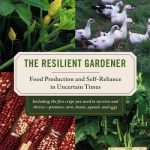Keeping Busy
I recently took a couple of hours to do something I’ve been putting off for ages: cleaning and oiling my gardening tools. Until we moved into a different house five years ago, I kept my tools in a dry, attached garage. Now I keep everything but my best pruning tools in a garden shed that’s more or less open to the moisture-laden air. Although the tools are out of the rain, they are rusting. Perhaps this would have happened eventually in my old garage, but whatever deterioration there was in 15 years, I didn’t notice it. Continue reading


